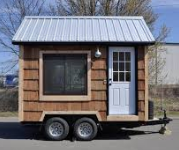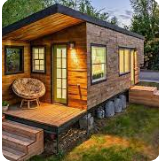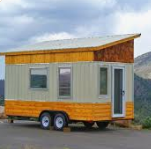Green businesses we need: Moveable tiny houses built from deconstructed materials
A Social Justice play, Moveable Tiny Houses decouple wealth building from land ownership. And if the job moves, so can the house.
Moveable Tiny Houses can be much less expensive to build than foundation-built tiny houses, because they are subject to RV building standards instead of IRC Internatioinal Residential Code standards.
They can also be a huge Social Justice play because they decouple wealth building from land ownership.
In addition, when the job moves for the worker, the home can move right along with them. In fact, it will carry them to the new location.
Moveable Tiny Houses are ideal for agricultural workers since many farms are zoned for migrant worker housing, which can be either foundation built and provided by the farmowner, or can be an RV (moveable tiny houses are built to RV standards and can receive an RV certification). Frequently there’s a lot of discarded building materials around a farm, and it can be a benefit to help attract farmworkers to your particular farm!
Add Domicology https://domicology.msu.edu/, where the Moveable Tiny Houses are built from deconstructed blighted buildings after appropriate environmental testing, they can be an Environmental Justice activity as well.
Tiny Home Industry Association https://tinyhomeindustryassociation.org/ has created a Vocational Tech program that takes participants through ow to build a tiny house by building one. It results in a certified Tiny House at the end of the process. So Tiny Houses can play a role in Workforce Development as well.
There’s a vibrant Tiny Home Community with groups around every possible Tiny House topic you might be interested in https://www.tinyhouse.com/ Check them out! They do an awesome Global Tiny House Virtual Conference, the next one is April 22-24, 2023 https://www.tinyhouse.com/event
And for the cherry on top of the sundae, there may be Inflation Reduction Act funds available for these projects. The Justice40 initiative mandates that 40% of the benefits of the Federal investments to to disadvantaged communities, including Clean Energy (check, solar panels), Clean Transit, Affordable Housing (check) and Workforce Development.
Let’s do this!
Til next time…







